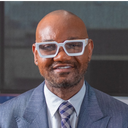Posted underLaser Hair Removal q&a
How Long Do The Burn Spots of Laser Hair Removal Stay on my Skin...I Am So Worried (photo)
I have done it before and never got such a problem...I am so afraid its gonna stay forever...this was my 5th time and only this time I got such a bad experience...how long does it going to be like this???does this go away at all?pls hel...which grade of burning is that???
Answers (4)
From board-certified doctors and trusted medical professionals
Dr. Sanusi Umar, MD

Dr. Sanusi Umar, MD
Dermatologic Surgeon, Board Certified in Dermatology
Answer
Dr. Hardik Soni, MD
Dr. Hardik Soni, MD
Board Certified Emergency Medicine Physician
Answer
Dr. Jacqueline Calkin, MD
Dr. Jacqueline Calkin, MD
Dermatologic Surgeon, Board Certified in Dermatology
Answer
Dr. Mitchell Schwartz, MD - Account Suspended
Dr. Mitchell Schwartz, MD - Account Suspended
Dermatologic Surgeon, Board Certified in Dermatology
Answer
More Laser Hair Removal Questions
See all Laser Hair Removal Q&AWE SEND PRETTY
EMAILS
What’s trending? Who’s turning heads? Which TikTok myths need busting? We’ve got you. No fluff, no gatekeeping—just real talk. Get our free, unfiltered newsletter.